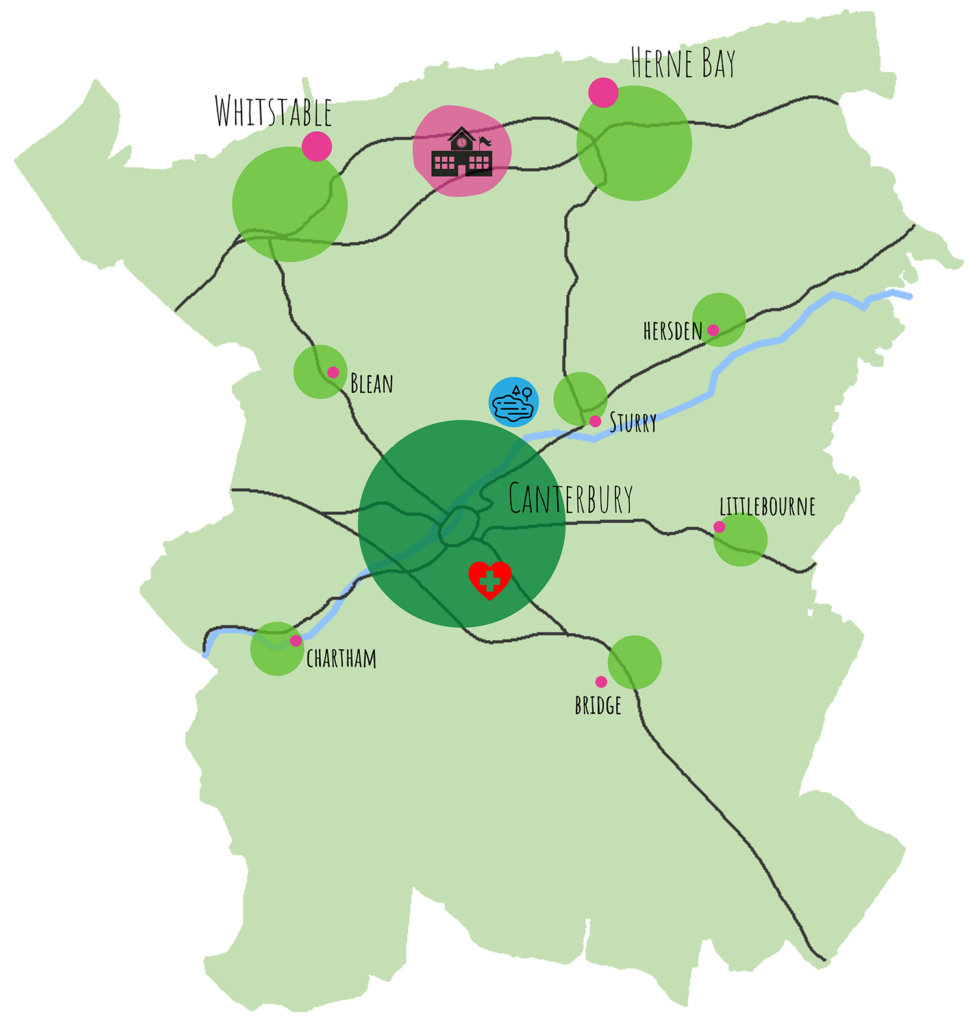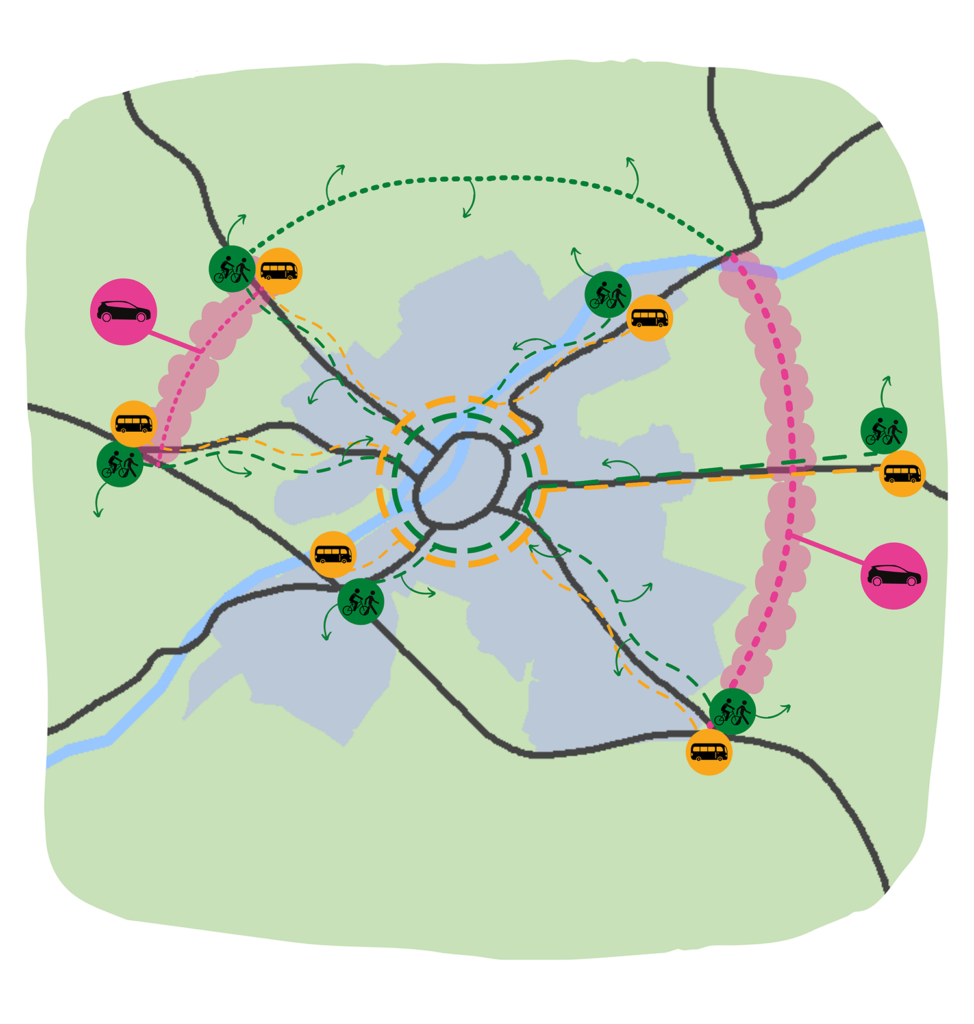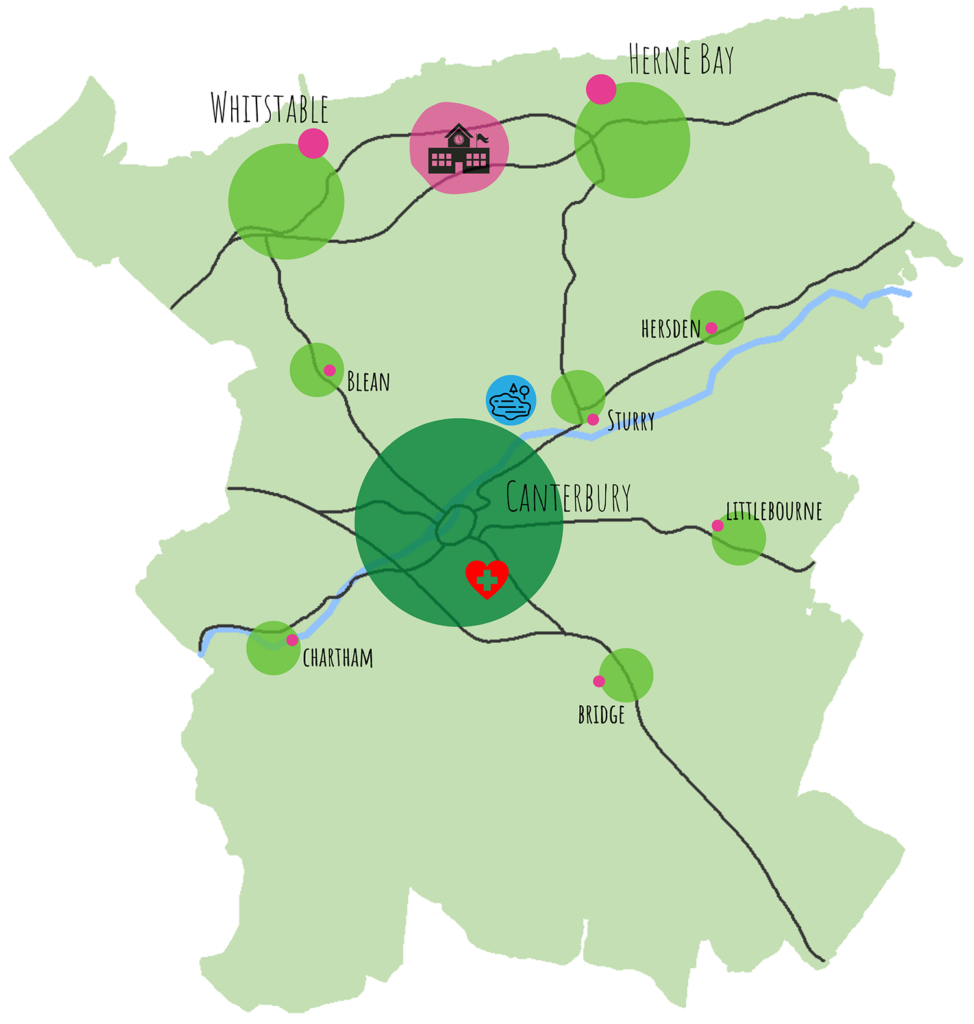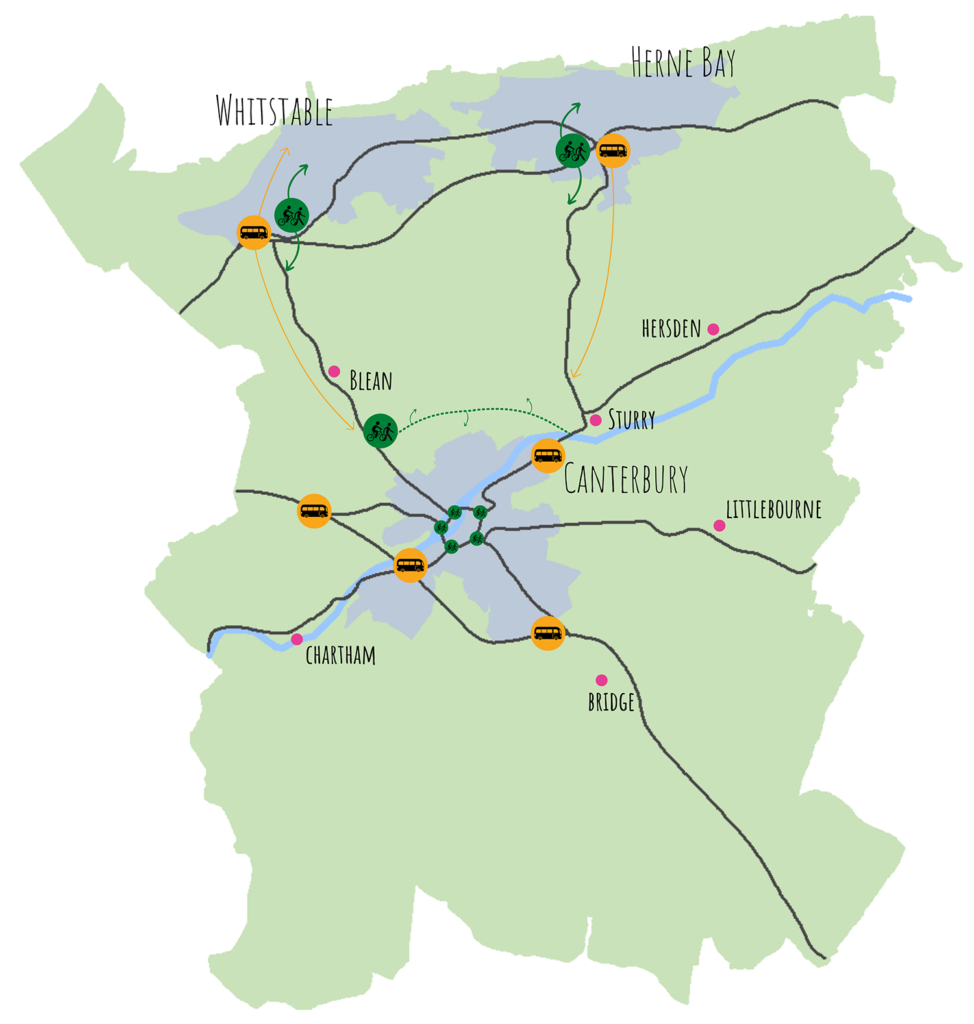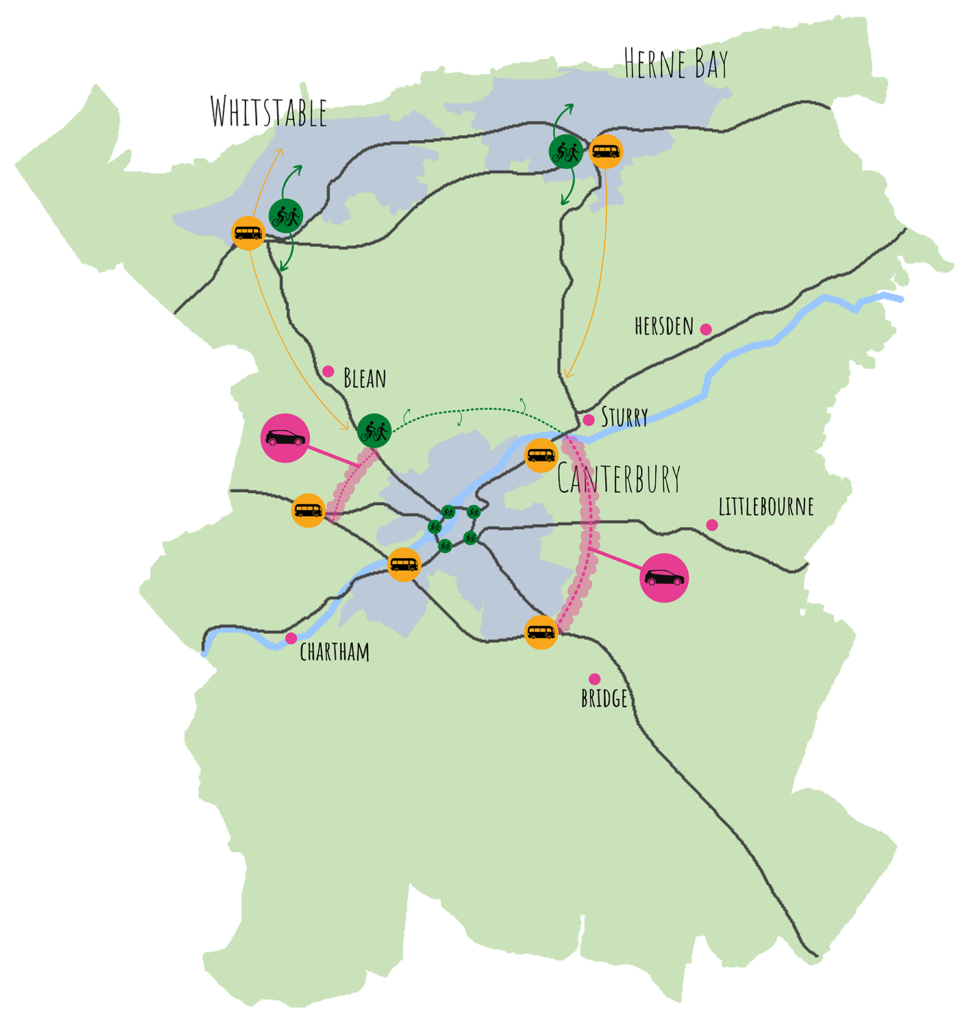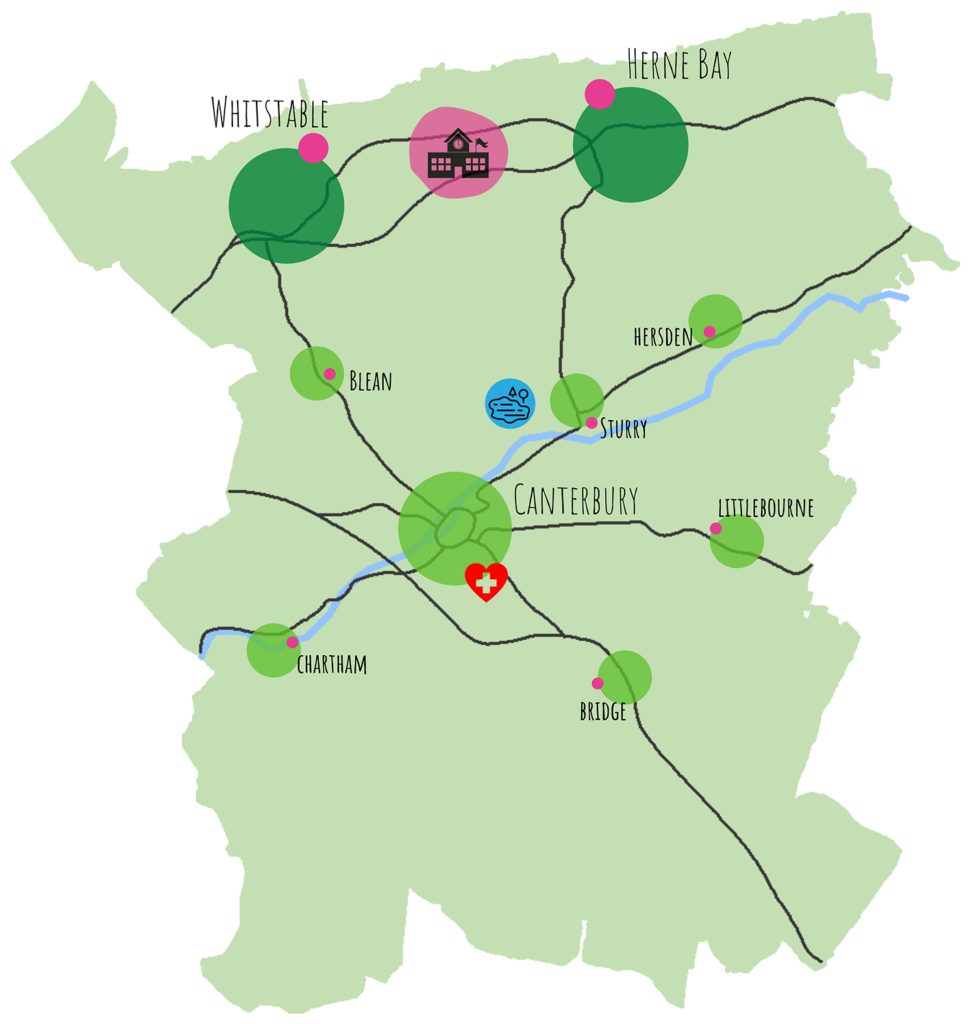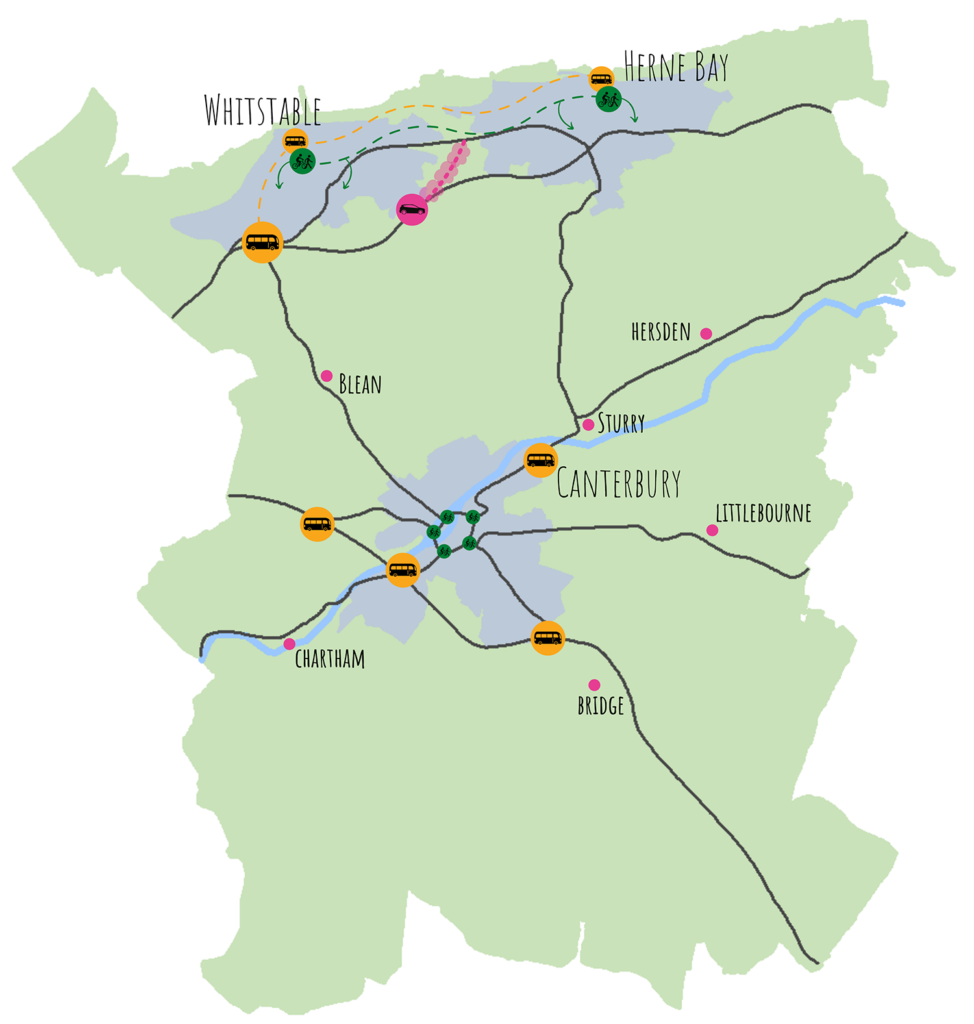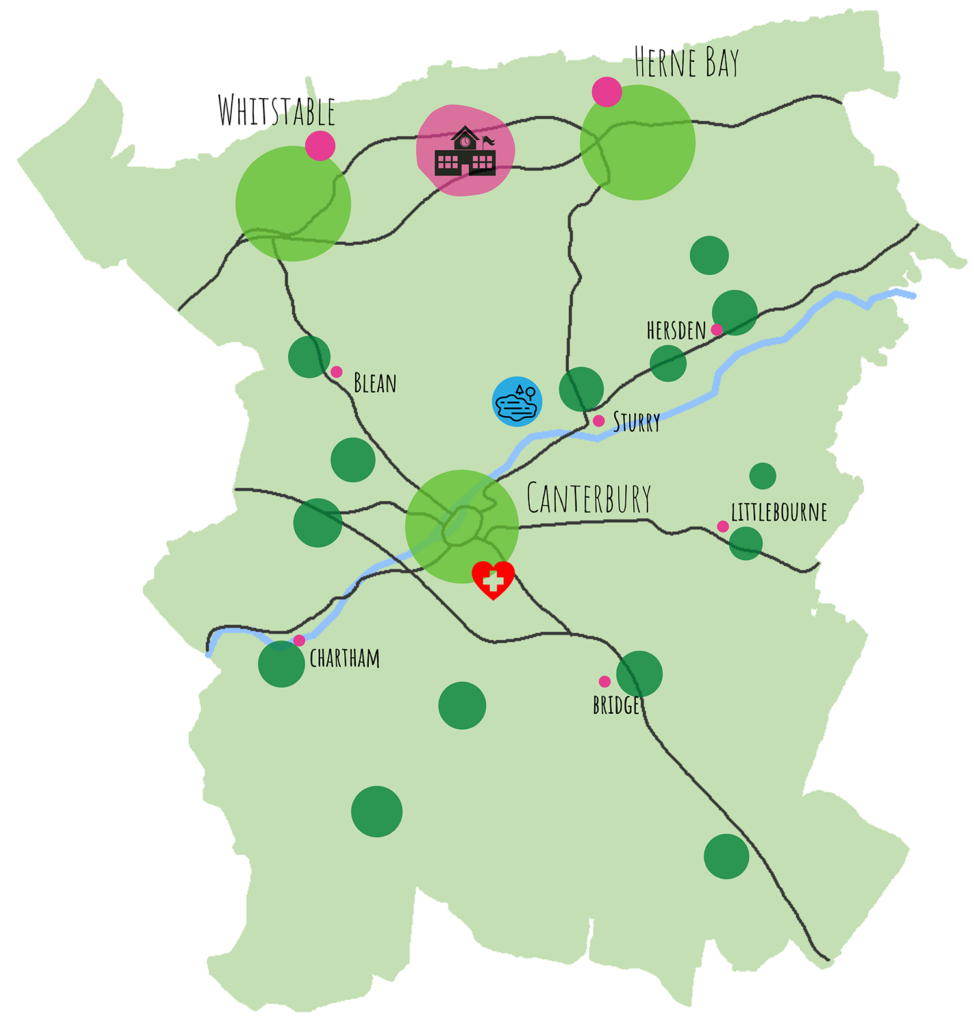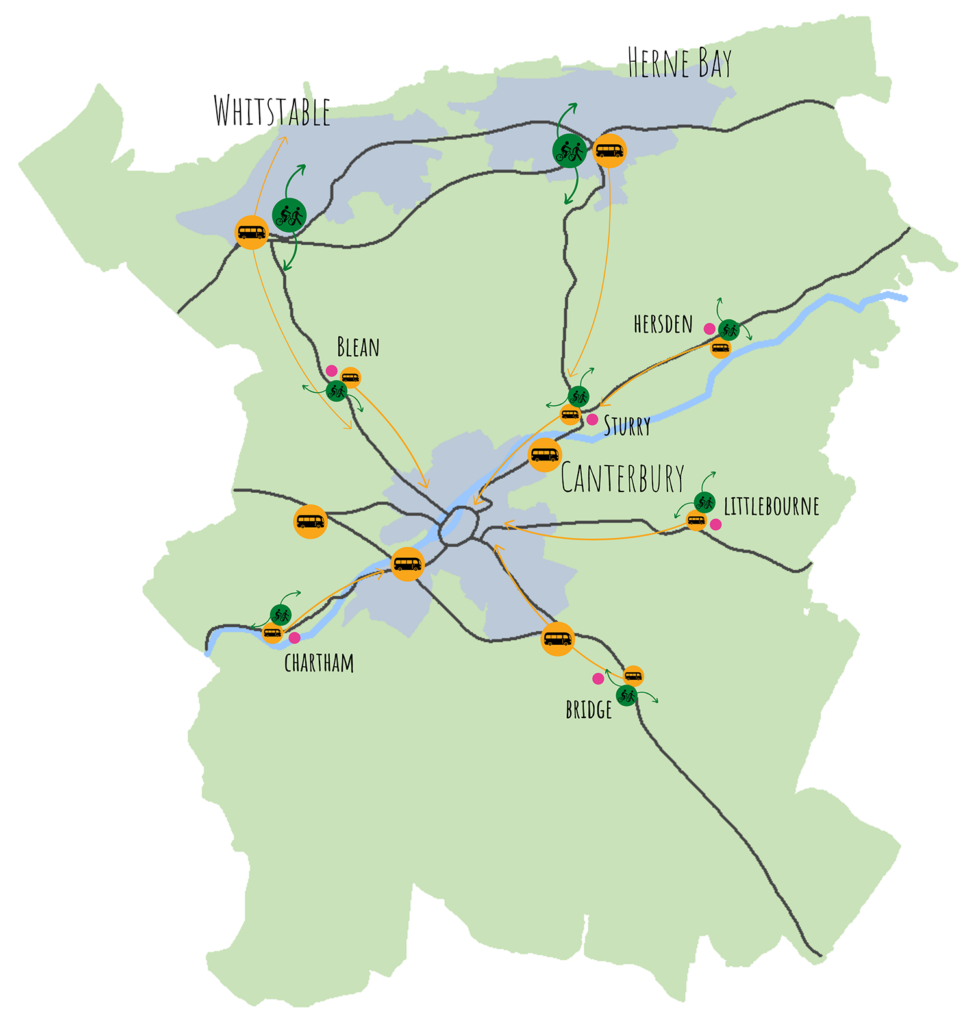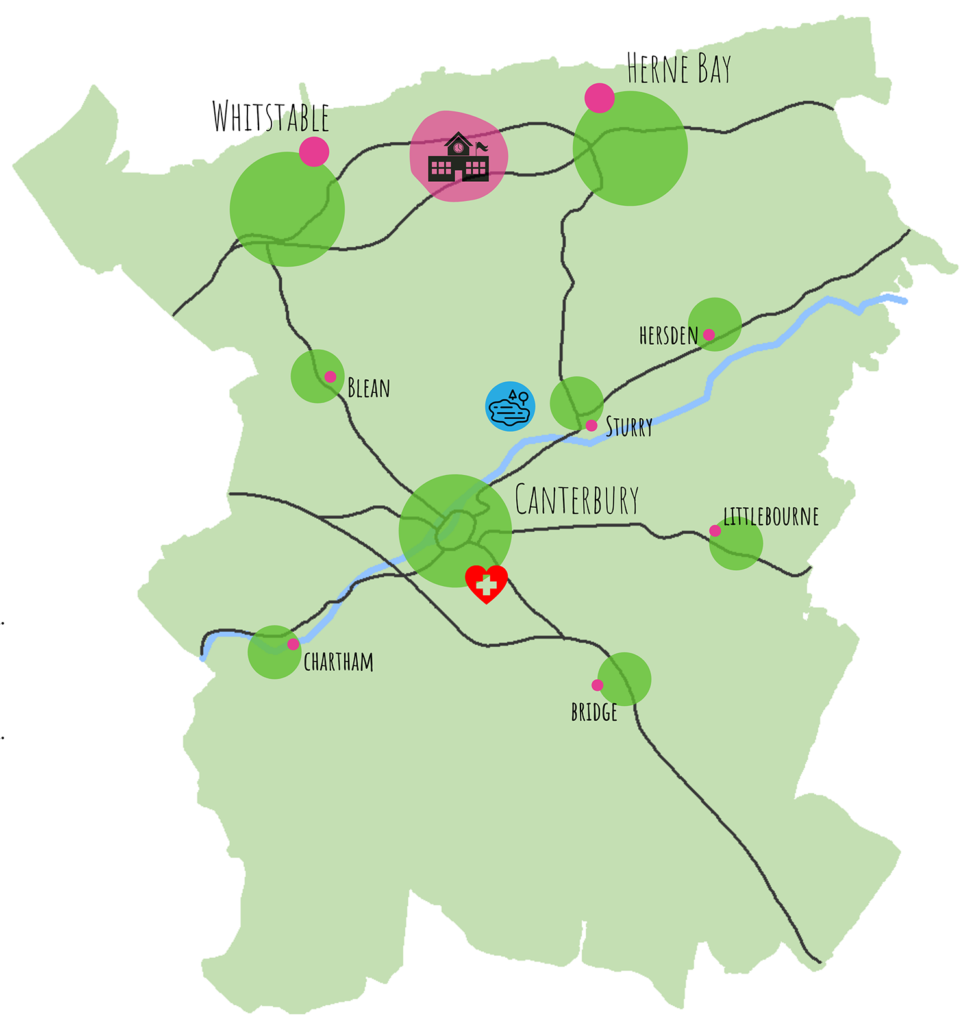Draft vision and growth options
The draft vision for the district
A strong and resilient economy
The district will be stronger and more resilient by 2040, offering high skilled jobs in areas like science and technology, thanks to the growth and development of universities and a strong medical sector. Business investors will continue to be attracted by the district’s connection to London and the continent, with new and diverse jobs for local people.
Growth centred on Canterbury
Growth and investment in the district will be centred on Canterbury, and complemented by an enhanced historic and natural environment that will create vibrant cultural and creative areas, and improved biodiversity. Together this will enhance quality of life for residents and improve the visitor experience.
Healthy communities
Investment in digital infrastructure and walking and cycling routes will have helped to improve air quality and the challenges of climate change, supporting good health and wellbeing in our communities.
Improved connectivity
Existing communities will be enhanced, and new healthy communities will be of high quality, low carbon design; with good public transport to the city and beyond. There will also be high quality, attractive public spaces and good access to local community facilities. A range of homes will meet the needs of the district, improve affordability and support growth.
The draft strategic objectives
The vision is supported by strategic objectives, which set out how the district will be developed up to 2040.
- Provide high quality affordable housing for everyone as part of mixed, sustainable communities
- Make sure housing is of high quality design, low carbon and energy efficient, with access to community facilities and open space
- Create a thriving economy with a wide range of jobs, including more high paid jobs, to support increased opportunities for everyone
- Support the growth and development of our universities as a centre of innovation and learning excellence, which will help create business start ups and skilled jobs
- Create a transport network with a focus on low carbon travel to improve air quality and people’s health, while making sure there’s excellent access to city and town centres on foot, cycle and by public transport, including intelligent transport systems
- Take advantage of, and improve, our links to and from London and the continent, while creating a local transport network which means most residents can access their day-to-day needs within 15 minutes through healthy, environmentally friendly journeys
- Support the sustainable growth of our rural communities with affordable housing, community facilities and transport, and take advantage of opportunities to grow the rural economy
- Capitalise on our rich and distinctive heritage and culture, enhancing character, sense of place and quality of life, supporting tourism and the local economy for our residents, visitors and businesses
- Exploit the delivery of infrastructure needed to support growth to maximise the benefits for existing residents and businesses, and ensure the critical infrastructure is delivered at the right time to support development
- Create accessible vibrant town centres, maximising digital connectivity, for residents, visitors and businesses to shop, stay and enjoy their leisure time
- Protect and enhance our rich environment, creating spaces, supporting wildlife and biodiversity and improving the health and wellbeing of our communities
- Adapt to and reduce the impacts of climate change by making sure new development is highly energy efficient and encourages low carbon lifestyles
Growth options
Preferred option
Based on the draft vision and strategic objectives, we think that the preferred growth option that is emerging is:
Growth to be focused on Canterbury to take advantage of the economic potential found in its heritage and universities.
To support this, there will be an extra 14,000 to 17,000 homes by 2040 and an upgrade to the A28 road, as well as significantly improved public spaces and less car use.
Strategic housing growth would be well connected through expansion of the city, and new communities would be supported by community infrastructure like schools and shops, plus open spaces.
There would also be some expansion at the coast and in villages, to support housing needs and the regeneration of Herne Bay.
Summary of this option
- Growth focused on Canterbury as the economic hub of the district, through expansion of the city and new communities
- More limited development at coastal towns and villages
- More homes to provide further economic growth and extra investment in local transport
- Upgrade of the A28 to allow traffic to bypass the city centre
- Redesign of public space and movement in the city to create an attractive environment for residents and visitors
- More investment in Park and Ride and bus infrastructure like new bus lanes
How would this option deliver the draft vision?
We think that this option would allow for the economic growth of the district, to support a strong and resilient local economy and provide a range of homes to improve access to high quality housing.
This option looks to harness the potential of Canterbury and to improve connectivity and people’s health. It provides an opportunity to directly tackle congestion and air quality, while at the same time enhancing the natural and historic environment in the city.
It would aim to deliver low carbon new communities, improve biodiversity and open space and make sure that accessible community infrastructure is delivered at the right time to support growth.
Canterbury focus A
- Growth focused on Canterbury with more limited growth at the coast and villages
- Minimum development of 9,000 homes to meet government targets
- Reallocation of road space on the ring road to provide safer, more attractive routes for walking and cycling
- Further investment in Park and Ride and bus infrastructure like new bus lanes
How would this option deliver the draft vision?
We think that this option would allow some economic growth, improve the resilience of the local economy, and provide a range of homes to improve access to high quality housing.
This option responds to the potential of Canterbury, providing for a shift towards more low-carbon journeys to improve people’s health.
It would aim to deliver low carbon new communities, improve biodiversity and open space and make sure that accessible community infrastructure is delivered at the right time to support growth.
Canterbury focus B
- Growth focused on Canterbury with more limited development at the coast and villages
- Additional development of between 14,000 and 17,000 homes to allow for further economic growth and significant investment in local transport
- Significant upgrading of the A28 so that through-traffic can bypass the city centre
- Reallocation of road space on the ring road to provide safer, more attractive routes for walking and cycling
- Further investment in Park and Ride and bus infrastructure like new bus lanes
How would this option deliver the draft vision?
We think that this option would allow for the economic growth of the district, to support a strong and resilient local economy and provide a range of homes to improve access to high quality housing.
This option looks to harness the potential of Canterbury, with investment in road infrastructure to manage congestion and improve connectivity.
It would aim to deliver low carbon new communities, improve biodiversity and open space and make sure that accessible community infrastructure is delivered at the right time to support growth.
Coastal focus
- Growth focused at the coast with more limited development in Canterbury and the villages
- Minimum development of 9,000 homes to meet government targets
- A new Park and Ride for Whitstable, supported by frequent bus services and investment in coastal walking and cycling routes
How would this option deliver the draft vision?
We think that this option would allow some economic growth, and would provide a range of homes to improve access to high quality housing.
This option would limit the potential for growth at Canterbury and opportunities for addressing congestion and air quality in the city, as the focus would be on accommodating growth at the coast, supporting a shift towards more low-carbon journeys.
It would aim to deliver low carbon new communities, improve biodiversity and open space and make sure that accessible community infrastructure is delivered at the right time to support growth.
Rural focus
- Growth focused in sustainable rural areas, with some growth at villages and hamlets, and more limited growth at Canterbury, Whitstable and Herne Bay
- Minimum development of 9,000 homes to meet government targets
- Public transport improvements connecting rural areas with urban areas
How would this option deliver the draft vision?
We think that this option would allow some economic growth, and would provide a range of homes to improve access to high quality housing.
This option would limit the potential for growth at Canterbury and opportunities for addressing congestion and air quality in the city, as the focus would be on accommodating growth at the villages.
It would aim to deliver low carbon new communities, improve biodiversity and open space and make sure that accessible community infrastructure is delivered at the right time to support growth.
New freestanding settlement
- Growth focused at a new freestanding settlement, with more limited growth in Canterbury, Whitstable and Herne Bay and rural areas
- Minimum development of 9,000 homes to meet government targets
- New transport infrastructure to support the new community
How would this option deliver the draft vision?
We think that this option would allow some economic growth, and would provide a range of homes to improve access to high quality housing.
Depending on the location, this option could limit the potential for growth at Canterbury and opportunities to address congestion and air quality in the city, as a new settlement would likely need significant bespoke infrastructure investment.
It would aim to deliver low carbon new communities, improve biodiversity and open space and make sure that accessible community infrastructure is delivered at the right time to support growth.

